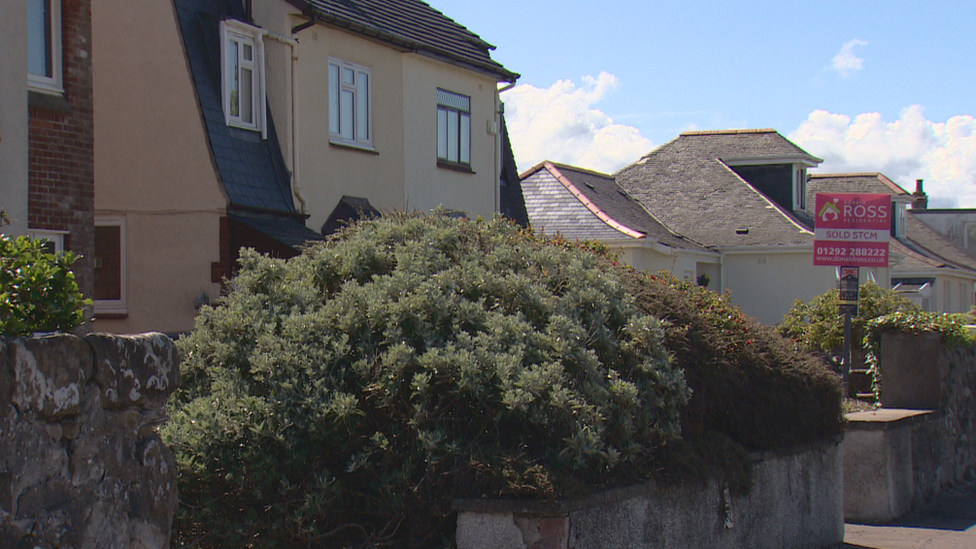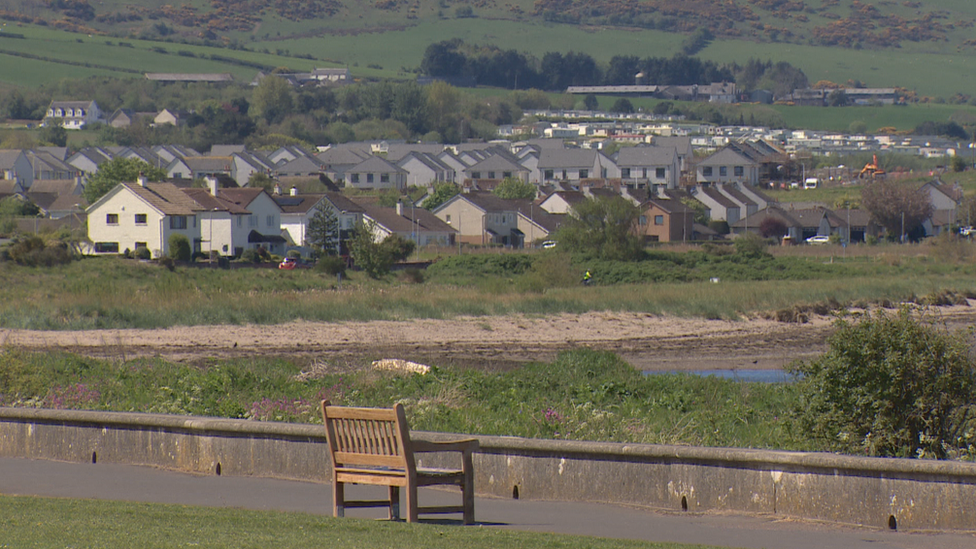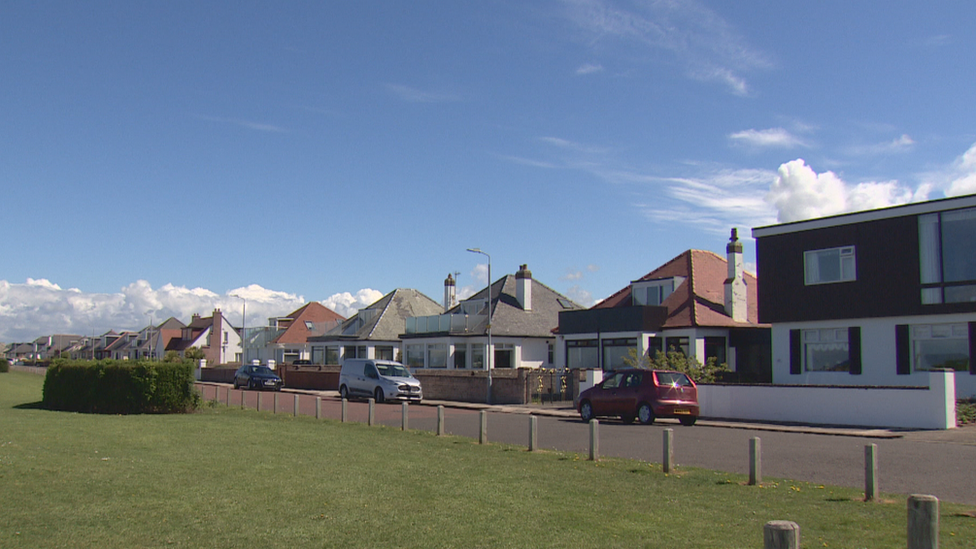Location, location, frustration
- Published

Home prices are rising at the fastest pace for 14 years, and the number of transactions in Scotland was sharply up at the start of the year.
Spring is usually busy, but this year it's been turbocharged by the pressures of lockdown, extra savings, and the opportunities of continued home working.
While there are big variations across Scotland, economists foresee prices continuing to rise.
Gavin Lawson and his wife Laura took all the advice they could, and sold before buying. Selling in East Renfrewshire is rarely difficult. It has big pressure for its schools.
With two-year old Skye, they wanted to be near family and friends in Ayr. What they had not expected was that their next move would be to turn to family members to put them up.

Even with funds primed and ready to go, and with offers over the home report valuation, they've lost out in a bidding frenzy, in a fast and turbocharged property market.
So Gavin is constantly checking property websites, to see if new homes have come on the market. It can require swift action.
It may not be back to the peak of the market before the financial and property crash of 2008.
But with Scottish prices in the year to March rising by 10.6% on average, and with the number of transactions up by around half on the first three months of last year, it's a hot market out there.
Flats are flatter
That reflects a number of factors:
Low supply. The number of new-build homes fell sharply after 2008, and it's only been returning to a healthier level in the past couple of years. New builds are important in meeting the demands from a rising population as well as pressure for better quality housing.
First-time buyers fell away when it became tougher to get a mortgage, and deposits had to be bigger, as regulators squeezed out risky lending following the 2008 crash. The share of households in private rented accommodation has nearly doubled during that time. Young people are getting on the housing ladder at a later age, if at all. And first-time buyers are vital to fuel moves further up the property ladder. One newcomer typically leads to four or five moves.
The market was forced to close last spring. So there has been pent-up demand. Lockdown this year did not come with instructions to stop home showings.
Having been locked down, and often working from home, a lot of us realised we don't have as much space inside our homes as we would like. Those in flats have seen the appeal of a garden, or they want to be nearer parks. That explains why the price of flats have been rising less fast - up by 7.6% in the year to March, to a Scotland-wide average of £116,000. Terraced housing has seen the steepest rise, of 13.3% in the year to March.
With time on their hands, home owners have been sprucing things up. DIY sales have been strong, and homes being put on the market are looking good.
For those who have continued to earn, with less to spend on going out or on holidays, they have been able to save a lot more, and that feeds through to bigger deposits. Savings are also essential for those who are offering over the home report price, as lenders typically limit their loan to the home report valuation. In hot spots, prices have been 15 to 20% above that price.
For many of those who have become used to working from home, it's a lifestyle change they want to continue. If they no longer have to commute at peak time, five days a week, they are looking for more spacious homes out of the city, where their money buys more space and nearby amenities. That explains the popularity of local property markets outside cities, but within easy reach, such as Ayr and across East and West Lothian. A Falkirk estate agent, John McIntosh, points me to evidence from Zoopla that the town's property has recently been the fastest-selling in Britain.
For some, remote working can mean a bigger move still. A home office with a sea view in the Highlands is attracting a lot of interest, as people depart cities, and not just in Scotland.
Location, location

Of course, markets are local. To say the average Scottish home is worth £167,000 doesn't mean all that much.
You have to think of the markets where you're selling or buying. The local authority figures reflect some of these pressures and trends. Edinburgh remains the most expensive council area, at £286,000 for the average home, but its prices have been rising by a subdued 4.1%.
You can see the same in London. The average house price there is three times that of Scotland, at £500,000. Prices are rising but much less fast than the rest of the UK. The north of England is seeing house prices rising faster than Scotland.
Orkney has seen a 25% increase in price in the year to March, but with small numbers of transactions, don't put your money on that being sustained.

The biggest mainland risers are in South Ayrshire, Argyll and Bute, Perth and Kinross, Inverclyde and Moray.
The only council area to see a fall, and a small one of less than 1%, is Aberdeen. The north-east moves to a different cycle, reflecting the oil jobs market. City homes used to be relatively expensive, but two oil price crashes in a decade have subdued prices to an average £140,000.
Aberdeenshire and Angus have also seen price increases below the national average in the past year.
Will this market continue to stay hot? We don't know, of course. Prices can go down as well as up.
But according to John Boyle, property economist at Rettie & Co, he's watching demographic pressures, sustained low interest rates and continued tight new build supply - and he's not the only one to foresee prices continuing to rise.
